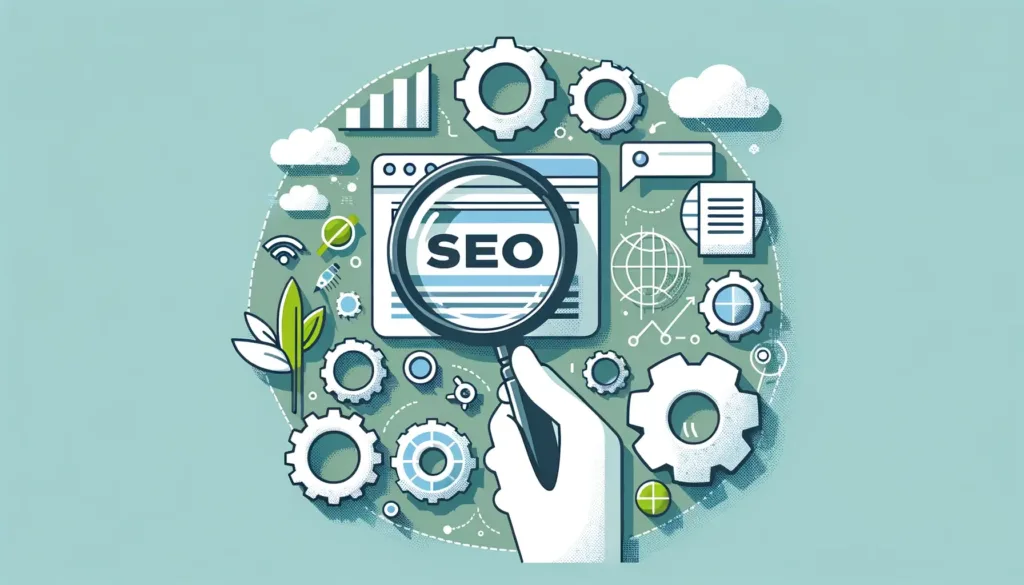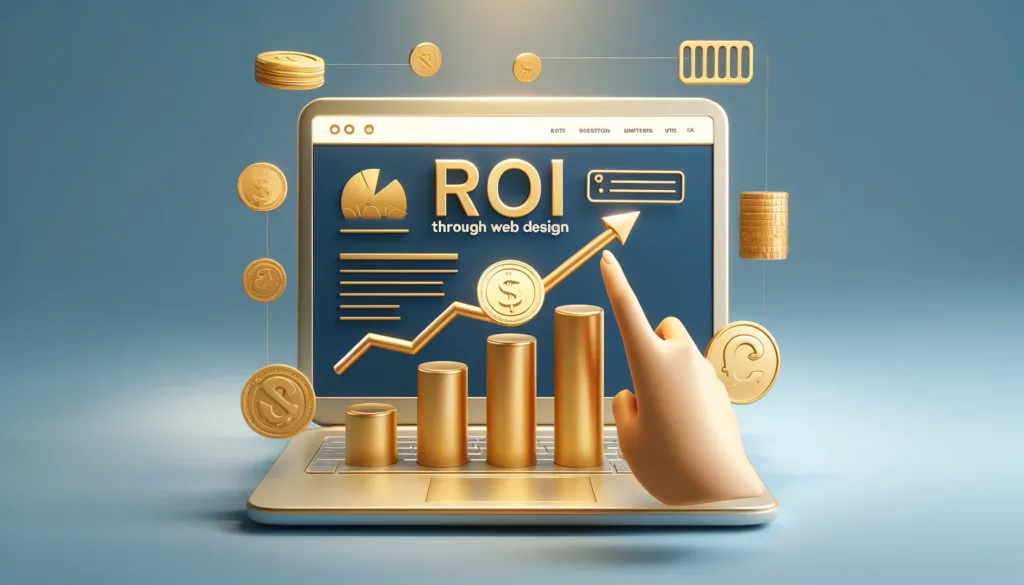Introduction
In today’s digital age, businesses can’t underestimate the power of digital marketing. It’s the beacon that guides potential customers to their online presence. However, there’s one component that acts as the foundation of all digital marketing efforts: web design.
This article aims to unfold how web design plays a pivotal role in shaping effective digital marketing strategies. Whether you’re a budding entrepreneur or a seasoned marketer, understanding this relationship is key to digital success.
Understanding Web Design and Digital Marketing

What is Web Design?
Web design is more than just pretty pictures and fonts. It’s about creating a digital environment where visitors feel engaged and guided towards taking action. It encompasses several elements:
Visual aesthetics: This includes the color scheme, typography, and layout that make a website appealing.
User Experience (UX) Design: The art of making your website easy and enjoyable to use.
User Interface (UI) Design: Focuses on the technical aspects that make the website function well.
Responsiveness and Mobile Optimization: Ensures your site looks great on all devices.
Digital Marketing Channels and Tools
Digital marketing isn’t just one tool but a toolbox full of strategies that help businesses reach their audience online, such as:
Search Engine Optimization (SEO): Optimizing your site to rank higher in search engine results.
Content Marketing: Developing valuable content to captivate and involve your audience.
Social Media Marketing: Using platforms like Facebook and Twitter to connect with your audience.
Email Marketing: Sending personalized messages to your subscribers.
Pay-Per-Click (PPC) Advertising: Paid ads that drive traffic to your website.
We have written a detailed article on Google Trends and PPC Campaigns: Enhancing Ad Targeting.
The collaboration between web design and digital marketing is undeniable. A well-designed website enhances every aspect of your digital marketing strategy, making it more effective.
Web Design’s Impact on SEO

Website Structure and Layout
A well-structured website helps search engines understand and rank your site better. Simple navigation and clear hierarchy boost your SEO efforts.
Mobile-Friendliness
With more people browsing on their phones, mobile optimization is crucial. Google even gives priority to mobile-friendly websites in its search results.
Site Speed Optimization
A website that loads quickly not only pleases visitors but also achieves higher rankings in search results. Optimizing images and leveraging browser caching can significantly improve load times.
SEO-friendly Content and Multimedia
Incorporating keywords into your content in a natural way improves your SEO. Also, using alt tags for images helps search engines understand and index your multimedia content better.
Enhancing User Experience (UX) Through Web Design

Good web design goes beyond aesthetics; it’s about creating a seamless experience for visitors. This section delves into the crucial role of UX design in digital marketing and how it can be leveraged to keep visitors engaged and encourage them to take action.
The Importance of UX
The user experience on your website can make or break your digital marketing efforts. A site that’s easy to navigate and enjoyable to use keeps people coming back. Moreover, a positive UX design significantly impacts your conversion rates, as users are more likely to respond to calls-to-action (CTAs) and engage with your content when they find the experience pleasant.
We have also written about Why Web Designing is Important in 2024.
Principles of Effective UX Design
Simplicity: Keep your design clean and uncluttered.
Consistency: Ensure your site’s look and feel are consistent across all pages.
Navigation: Ensure visitors can easily locate what they’re seeking.
Accessibility: Design your site so everyone, including people with disabilities, can use it.
Analyzing User Behavior
Understanding how users interact with your site is key to improving UX. Use tools like Google Analytics to track where users spend time and where they drop off. This data helps inform design changes that can enhance the user experience.
Case Studies
Highlighting real-world examples of successful UX improvements can provide insights into practical applications of UX principles. These case studies often show significant improvements in engagement rates, bounce rates, and conversion rates.
Web Design Strategies for Effective Content Marketing

Content marketing and web design are like two peas in a pod. The design of your website should not only complement but also amplify your content marketing efforts.
Aligning Design with Content Strategy
Your website design should reflect your content strategy. For instance, if your content is image-heavy, your design should accommodate high-quality images without slowing down your site.
Visual Storytelling
Using visuals can help tell your brand’s story more effectively. Infographics, videos, and high-quality images can convey complex information in an engaging and digestible way.
Integrating Content
How content is integrated into your design can impact its effectiveness. Ensure that your blogs, case studies, and videos are easy to find and navigate. Well-placed CTAs can guide users toward desired actions, like signing up for a newsletter or making a purchase.
CTA Placement and Design
CTAs are crucial for converting visitors into leads or customers. The design and placement of these buttons can significantly impact their effectiveness. They should stand out but feel cohesive with the overall design.
Leveraging Web Design in Social Media Marketing

Your website and social media platforms should work together seamlessly. A coherent web design can enhance your social media marketing efforts and vice versa.
Creating a Cohesive Visual Identity
Ensure your brand’s visual identity is consistent across your website and social media. This helps reinforce your brand image and makes your business more recognizable.
Optimizing Content for Social Sharing
Design your website with social sharing in mind. Include social sharing buttons on content pages and blog posts to make it easy for visitors to share your content.
Incorporating Social Proof
Integrating social proof, like testimonials and user reviews, into your web design can build trust with your audience. Displaying social media feeds on your site can also demonstrate your brand’s social engagement.
Strategies for Social Media Engagement
Use your website design to encourage social media engagement. For instance, contests that require participants to follow your social media channels or share your content can boost your social media presence.
Email Marketing and Web Design
Email marketing remains a powerful tool in the digital marketer’s arsenal, and web design plays a crucial role in maximizing its effectiveness. A well-designed website can significantly enhance your email marketing efforts.
Designing Landing Pages that Convert
Landing pages are critical to the success of your email marketing campaigns. They are where your subscribers arrive after clicking on a link in your email. These pages should be:
Visually appealing: To keep the visitor’s interest.
Consistent with email messages: To avoid confusion and ensure a smooth transition.
Focused on a single action: To increase the conversion rate.
Role of Web Design in Email Templates
The design of your email templates should:
Reflect your brand identity: For consistency and recognition.
Be responsive: Ensure they appear great on all devices.
Be visually engaging: To capture the reader’s attention.
Personalization and Segmentation
Web design can help personalize the user experience on your site, which can then be reflected in your email marketing. By segmenting your audience based on their behavior on your website, you can send more targeted and relevant emails. This personalized approach can result in increased engagement rates.
Maximizing ROI Through Web Design in PPC Campaigns

PPC campaigns can be a significant investment, and the design of your website can play a big role in ensuring you get a good return on that investment.
Designing Landing Pages that Convert for PPC
The landing page for a PPC ad must be highly optimized for conversions. This means:
Clear and compelling headlines: To immediately catch the visitor’s attention.
Relevant and concise content: To match the promise made in the PPC ad.
Strong CTAs: To lead the visitor towards taking an action.
A/B Testing Design Elements
Testing different design elements on your landing pages can reveal what works best for your audience. Experiment with:
Layouts
Color schemes
Images
CTA buttons
The insights gained from A/B testing can significantly improve the performance of your PPC campaigns.
Integrating Web Analytics
To fine-tune your PPC campaigns and your website design, use web analytics. These tools can help you understand:
Monitoring the interaction of visitors with your landing pages
Which design elements are most effective
Where most conversions are happening
This data is invaluable for continuously improving both your PPC campaigns and your website’s design.
Conclusion
The role of web design in digital marketing is both foundational and transformative. As we’ve explored, from enhancing SEO and user experience to leveraging design in content and social media marketing, web design is integral to a successful digital marketing strategy. Looking forward, the integration of emerging technologies and adherence to evolving user expectations will dictate the effectiveness of both web design and digital marketing efforts.
By investing in professional web design and staying ahead of trends, businesses can ensure their digital marketing strategy is not only current but also future-proof. The relationship between web design and digital marketing is a dynamic one, with each element continuously influencing and enhancing the other, leading to more engaging, effective, and successful digital experiences.
Author

Olivia, our Design Professional , crafts digital landscapes that captivate and resonate. With an artistic flair and a penchant for user experience, he turns visions into visually stunning, user-friendly websites.
View all posts







